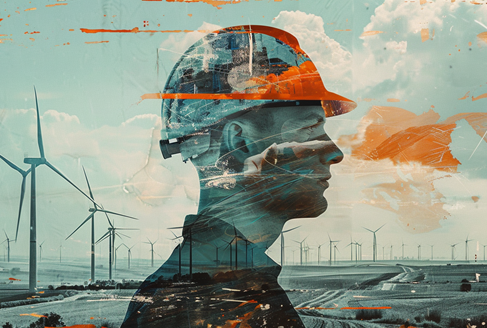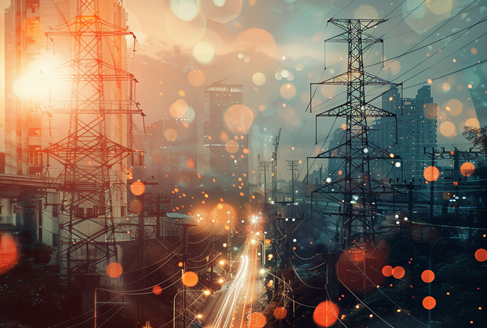How does Wind Energy Work?
It's hard sometimes to imagine air as a fluid. It just seems so... invisible. But air is a fluid like any other except that its particles are in gas form instead of liquid. And when air moves quickly, in the form of wind, those particles are moving quickly. Motion means kinetic energy, which can be captured, just like the energy in moving water can be captured by the turbine in a hydroelectric dam.
Wind energy is a renewable energy source that captures wind power by harnessing wind turbines and windmills, which is then generated into clean electricity. This technology is transforming the energy landscape, which is contributing to a greener and more eco-friendly energy future.
In the case of a wind-electric turbine, the turbine blades are designed to capture the kinetic energy in wind. The rest is nearly identical to a hydroelectric setup: When the turbine blades capture wind energy and start moving, they spin a shaft that leads from the hub of the rotor to a generator. The generator turns that rotational energy into electricity. At its essence, generating electricity from the wind is all about transferring energy from one medium to another.
Wind power all starts with the sun. When the sun heats up a certain area of land, the air around that land mass absorbs some of that heat. At a certain temperature, that hotter air begins to rise very quickly because a given volume of hot air is lighter than an equal volume of cooler air. Faster-moving (hotter) air particles exert more pressure than slower-moving particles, so it takes fewer of them to maintain the normal air pressure at a given elevation (see How Hot Air Balloons Work to learn more about air temperature and pressure). When that lighter hot air suddenly rises, cooler air flows quickly in to fill the gap the hot air leaves behind. That air rushing in to fill the gap is wind.
Wind power all starts with the sun. When the sun heats up a certain area of land, the air around that land mass absorbs some of that heat. At a certain temperature, that hotter air begins to rise very quickly because a given volume of hot air is lighter than an equal volume of cooler air. Faster-moving (hotter) air particles exert more pressure than slower-moving particles, so it takes fewer of them to maintain the normal air pressure at a given elevation (see How Hot Air Balloons Work to learn more about air temperature and pressure). When that lighter hot air suddenly rises, cooler air flows quickly in to fill the gap the hot air leaves behind. That air rushing in to fill the gap is wind.
Today, many highly successful on-shore and off-shore wind power projects exist around the globe. Countries around the world that are currently considered leaders in wind include the UK, China, Denmark, Spain and Portugal. Other countries are pursuing the trend with the same determination for a just energy transition through renewables.
Wind energy facts – Did you know?
- When was the first wind turbine built?
Windmills have been used around the world for hundreds of years. The first recorded examples of wind energy being harnessed to make electricity include James Blyth’s 1887 invention to light his Scottish holiday home, and Charles F.
Brush’s automatically operated wind turbine built in 1888 in Cleveland, Ohio. Brush’s turbine, with its 17-metre rotor, provided his home with power for twenty years. Wind power has since emerged as one of the fastest growing renewable energy sources in the world.

- What is the biggest wind turbine in the world?
The wind turbine with the largest capacity in the world is the offshore Vestas V164 8 Megawatts (MW) turbine installed at the National Test Centre for Large Wind Turbines in Østerild, Denmark. While some wind turbines can indeed get very large, the wind farms in Australia have wind turbines with an average 2MW capacity.



